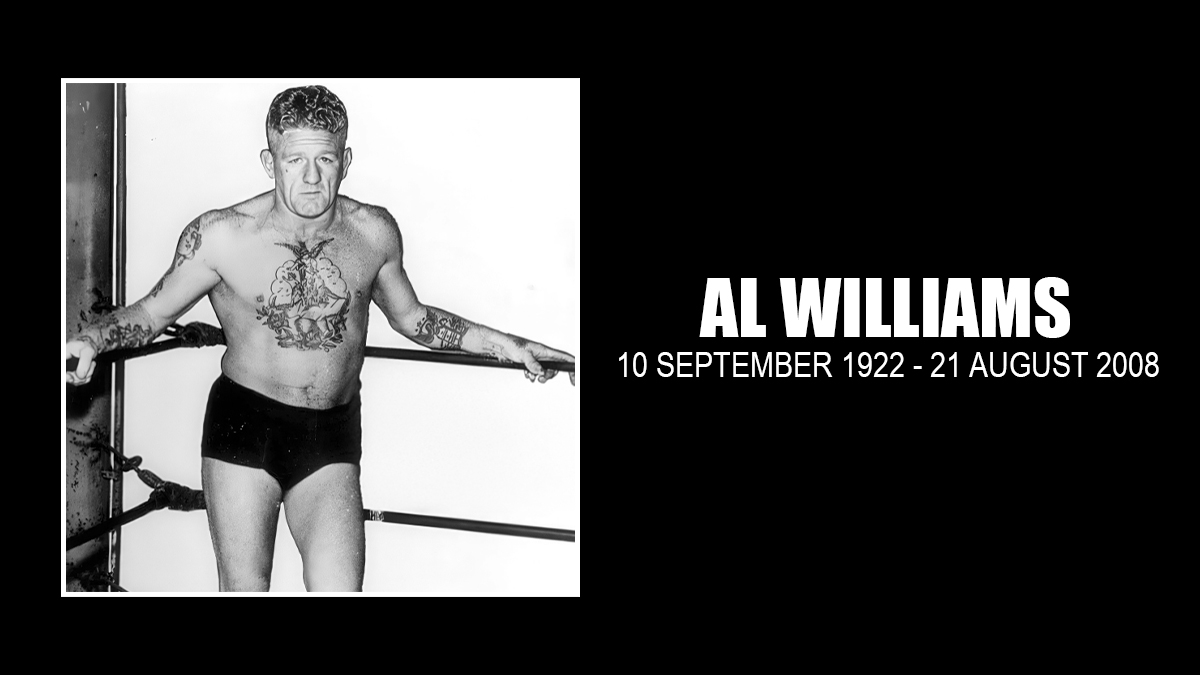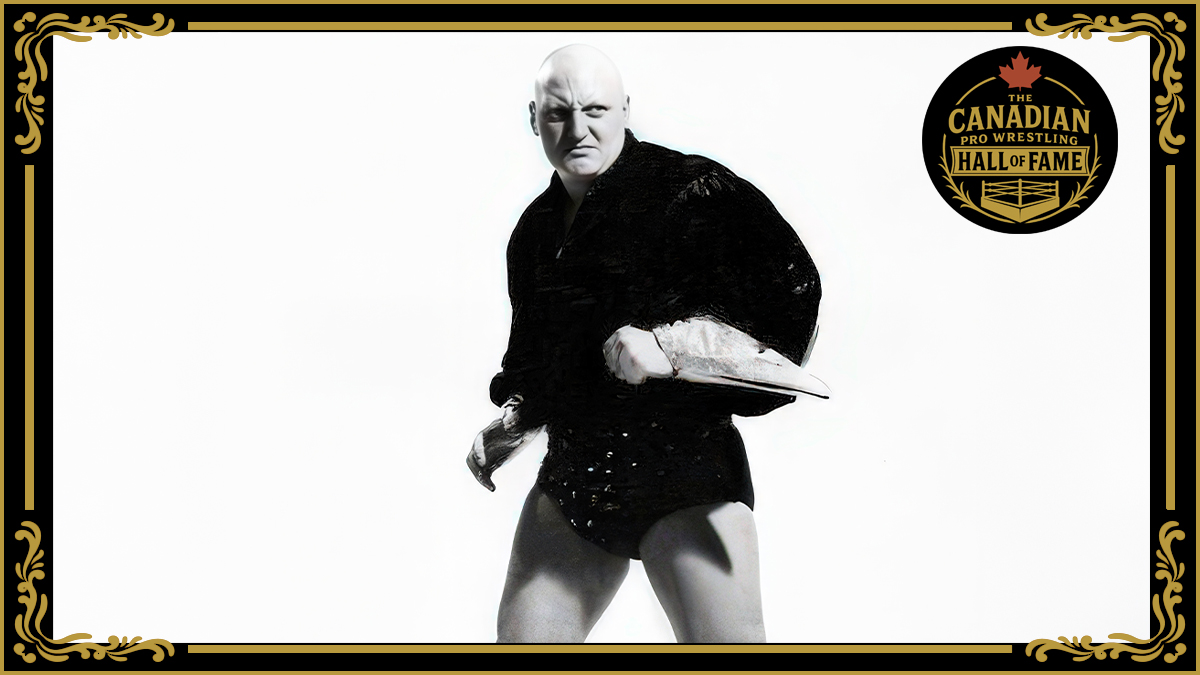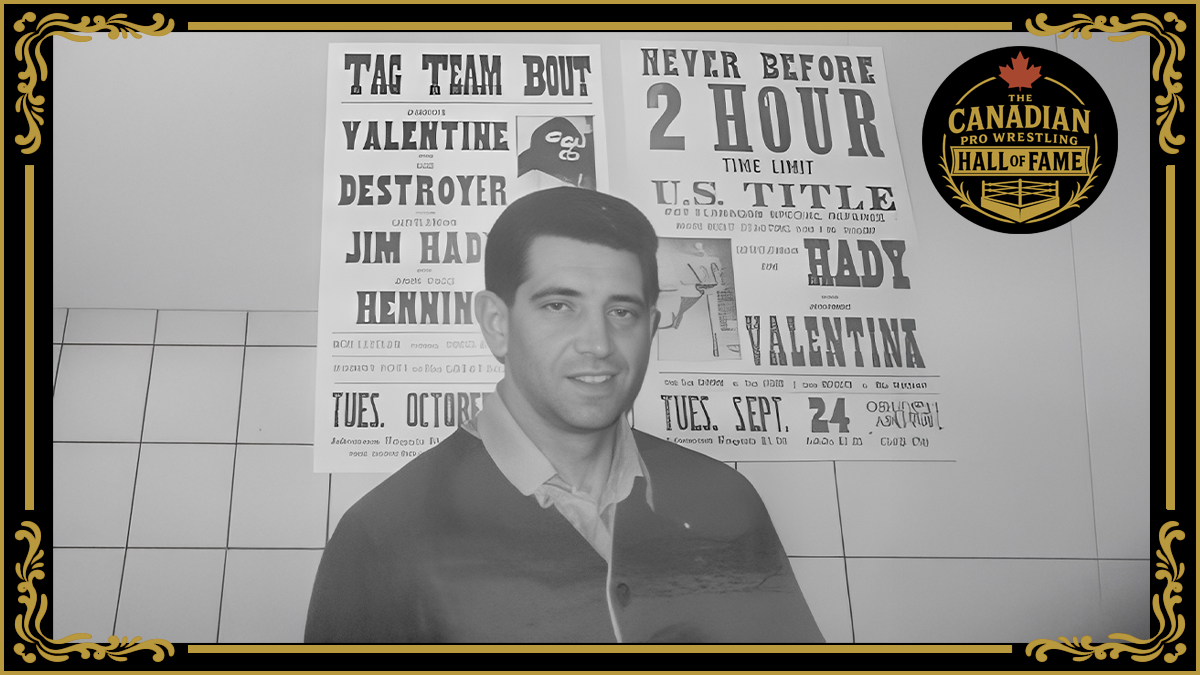He was involved in a few of professional wrestling’s most controversial angles, including the threatening of the Easter Bunny and death of Alberto Torres, but fans wouldn’t have known it, since he was masked.
In those two cases, Tom Andersen — who wrestled as Tom Andrews — was masked as The Claw.
But in a later run, as half of The Interns, under Dr. Ken Ramey, he was in equally hot water, especially when they knocked out African-American wrestler Bearcat Brown in Birmingham, Ala., and painted him white.
Andersen, who died on September 1, 2020, was one of those solid hands that just knew how to perform. If someone who as ornery a person as Bruiser Bob Sweetan can lay down a compliment, as he did to this writer, that means something.
“He had his limitations, but he always gave his 110% every time he stepped in that ring. A hard-working dude, a straight-shooter. He was just an all-around good guy,” said Sweetan in 2006.
Born Tom Andersen in Salt Lake City, Ut. in 1937, he joined the pro ranks after a stint in the Marine Corps, training under Guy Brunetti. He changed his name to Andrews to avoid confusion with another newcomer, Ox Anderson, and, beginning in 1963, forged a solid career in Calgary, Portland, Omaha, Japan, and Tennessee.
But The Claw was Andersen’s first chance to work on or near the top of the cards, and it began in Omaha, Neb.
Wearing a mask — later, it would have a claw depicted on it, but not initially — The Claw was both a wrestler, but then when he was hurt, a manager.
“I had a broken leg in Omaha. I was managing Ox Baker. They wanted to keep the heat on me when I was The Claw, so they brought Ox in and let me manage him while I was healing with this broken leg,” recalled Andrews to this writer in 2006. “I was out at ringside like a manager and — I forget the name of the town we were in, somewhere in Nebraska — we really got the heat going. Ox jumped out of the ring and took off. I had these people swarming me, and of course, I’m on crutches. Kay Noble came out and saved me. I’m not kidding you. She came out. I did have a walker on my cast, and I could walk. Of course, I was swinging punches just like her. Boy, she led me back to the dressing room, just knocking guys on their butt.”
While Lonnie Mayne was in Japan for three months, the Oregon territory borrowed Andrews as The Claw from Omaha, and let Beauregarde manage him. Andrews went in as a favor to Mayne, who he knew from Salt Lake City. “We were pretty close. We were like brothers. That’s no lie,” said Andrews. “Some of the things he and I did, oh my god, I’m afraid to tell them. But we were pretty close.”
Pressed for details, Andrews shared two stories:
- “Lonnie and I, we picked up a hitchhiker one night. We did it a couple of times. One time, we acted like we were gay and kind of scared him off.”
- Mayne and Andrews went to a shopping to a mall in Oregon with their wives; “As we walked in, he had a pair of handcuffs. He handcuffed his wife to the front door. We walked off and left her. She was opening and closing the door for people coming in and going out. She was handcuffed to the door handle!”
In Portland, the night before Easter in 1970, Beauregarde was on Portland’s KPTV, telling viewers that he was going to let The Claw loose in town. “All you kids out in TV land are not going to have any candy or Easter eggs tomorrow. I told The Claw to hide in the bushes tonight and wait for the Easter Bunny to come by, and when he does I told The Claw to jump out and put the claw hold on him and squeeze, and squeeze, and squeeze.”
Andrews hadn’t been clued in on what Beauregarde was going to say. “I was just standing there. He was doing the interview. He came up with that, and I said, ‘Uh oh,'” recalled. Uh oh is right. The phone lines lit up, and the station representatives threatened to ban Portland Wrestling forever if an apology wasn’t made. “I laughed my butt off,” said Larry Pitchford, aka Beauregarde. “I had to come back on: ‘No, no, easy, I’ll keep him, I’ll cage him. I won’t let him kill the Easter Bunny.'”
Those three months in Portland were memorable, said Sandy Barr, an older wrestler who knew Andrews in Salt Lake. “He was never really a main eventer here, but people remember him. … He was a real good friend of mine.”
However, a match in June 1971, teaming with Ox Baker, would force Andrews to re-evaluate his spot in professional wrestling.
After a bout against Alberto Torres and a partner, Torres was hospitalized. Promoter Joe Dusek put Andrews on TV to cackle about the injuries he “inflicted” on his popular rival. Torres died three days later, and the promotion continued to try to cash in on the idea that The Claw had killed Torres.
On June 13 1971, Alberto died of a ruptured pancreas and internal injuries in Omaha, Neb., at the age of 37, leaving behind a wife and two children. Lincoln Star editor Hal Brown later gave Dusek the “Poor Taste Award for 1971,” for bilking the tragedy by claiming The Claw had killed Alberto. In fact, the death was an accident, the result of a disorder that existed beforehand. Seven weeks later, Alberto’s brother Ramon unmasked The Claw as Tom Andrews in a challenge match.
“When that thing happened, I was ready to quit the business. I had to do a lot of soul searching,” Andrews said in The Pro Wrestling Hall of Fame: The Tag Teams, where the Interns/Medics ranked #15 all-time. “Not that I did anything wrong, but I talked about it on TV.”
A change of mask was just what he needed.
With Ken Ramey as the manager, The Medics/The Interns (Jim Starr and Billy Garrett) had been on fire, in Florida, in Tennessee, in Oklahoma, wherever they worked. One of the most successful and most reviled teams of all time, though there were many in the fold, under the “sterile” scrubs that they wore to the ring. (Others using the gimmick prior included Dick Dunn and Billy Garrett, and Tony Gonzales and Donald Lortie.)
Garrett, upset about payoffs in the Tennessee territory from promoter Nick Gulas, dropped out of the team.
Ramey called Andrews, and he was able to slide into Garrett’s spot without a misstep. “Tom was one of the greatest workers in this business, as far as I’m concerned,” Ramey said in PWHF: The Tag Teams. “He was absolutely great, fit right in. He knew how to blend in with this territory.”
The Interns’ philosophy was simple—to pull a sneaky trick, frequently involving a chloroform-loaded cloth, that would get the fans begging top see their comeuppance. “We wanted people to walk out of there saying, ‘You know, if that dirty, little so-and-so of a manager hadn’t interfered, or if that darned Intern hadn’t pulled that guy’s leg, they would have lost,” Ramey said.
In one of the most infamous TV angles of the era, The Interns put the popular team of Len Rossi and black star Bearcat Brown to sleep with chloroform in the racially charged environment of Birmingham, Ala. in 1972, then covered Brown with white paint. “Oh, my God!” Andrews exclaimed. “In Birmingham? Ramey announced Bearcat Brown was so scared of The Interns that he turned white and fainted. That tape that we did with Bearcat Brown and Len Rossi, we capitalized on that for about a year-and-a-half.” The single incident sparked three legal actions that night alone, Starr added. “We had the sheriff’s department, the provost marshal’s for the guys in the service, and the city police all come down there. Gulas said, ‘Don’t worry, give them all to me, and he did.’ ” The team also starred in San Francisco, where police officers showed Ramey bullets they had absconded from the guns of paying customers.
The Interns even could rile up football teams. Before the 1971 Orange Bowl, when Alabama and Nebraska were squaring off for the national championship, Ramey ranted for weeks about the Crimson Tide’s shortcomings—enough so that a few players came to the TV studios to hunt him down. A few weeks later, after Alabama lost, Ramey was quietly drinking his morning coffee at a Holiday Inn when he was beckoned by legendary Alabama coach Paul “Bear” Bryant. As Ramey remembered, Bryant said: “I want to congratulate you. You did more to pump up my football team than I could do.” But the Hall of Fame coach wondered why Ramey never gloated about Alabama’s loss—and therein learned how The Interns operated. “I did not want to sit down there and rub your face in mud by saying I told you that you were going to lose. That is not the type of heat I want. I want heat pertaining to the wrestling match,” Ramey responded. “And he laughed and said that was awful funny.”
The Interns ripped through the Central States region in 1974-75, winning the area’s tag titles three times. In early 1978, Phil Hickerson and Dennis Condrey finally unmasked Starr during yet another intense program in Tennessee. The unmasking effectively ended The Interns’ long run in the Volunteer State. Starr later worked as 666.
While working for Bill Watts in the Mid-South territory, with Skandor Akbar as their manager, Andrews couldn’t take the pain in his elbow any longer, and elected to have surgery. It was the end of his run as a tag team villain.
With limited mobility in the elbow after surgery, he changed up his style by necessity. He was The Intern/Super Intern in Kansas City, and Buck Robley unmasked him. From then on, he was Tom Andrews.
It was under that name that he got a shot at Bob Backlund‘s WWWF title on January 4, 1980, in St. Louis at Kiel Auditorium, one of those examples of the pull and respect that promoter Sam Muchnick had to get talent from anywhere on his cards. The newspaper noted the detail of the match: “Andrews broke one of Backlund’s wrist locks, and caught Backlund with a Boston Crab. But Backlund slipped behind Andrews and put on an Atomic Drop to win the match in 12:18.”
Following his retirement from pro wrestling, Andrews was the head of the maintenance department in his home of Lawson, Mo. He was a top fundraiser for the Ronald McDonald House program and leukemia societies.
Wrestling-wise, he palled around with fellow oldtimers like Bob Geigel and announcer Bill Kersten, and they’d often travel together for events such as the Cauliflower Club reunions in Las Vegas — Andrews was honored in 2003 — and the George Tragos/Lou Thesz Professional Wrestling Hall of Fame in Waterloo, Iowa.
Details on his passing on September 1, 2020, aren’t fully known at the moment, though Andrews had been in failing health for a few years, unable to attend his favourite gatherings of old pro wrestlers.




